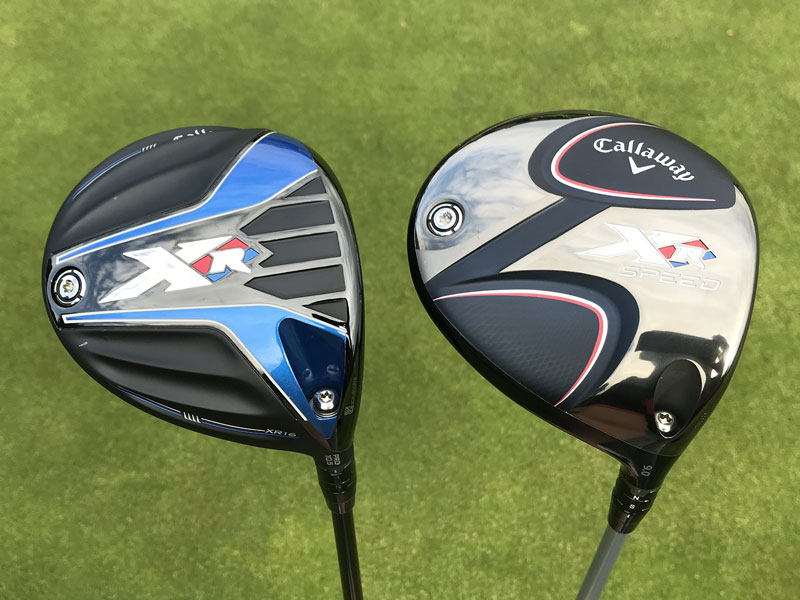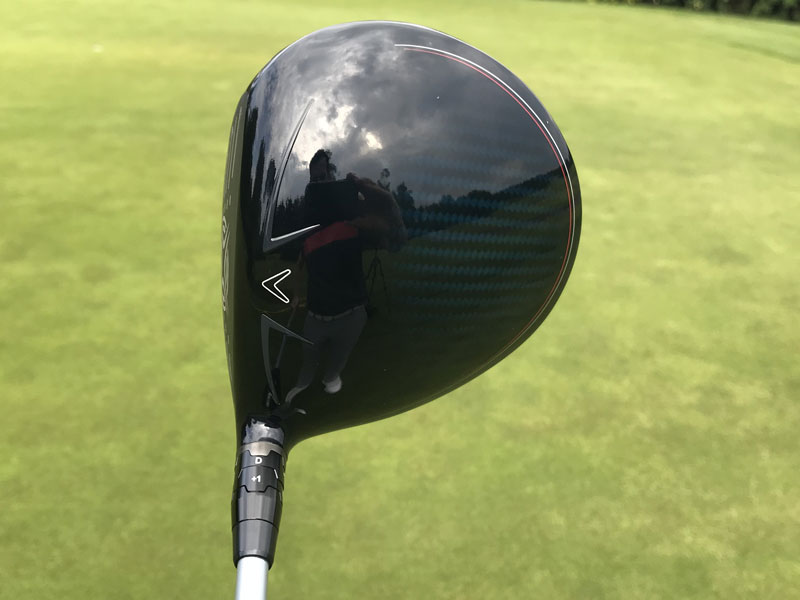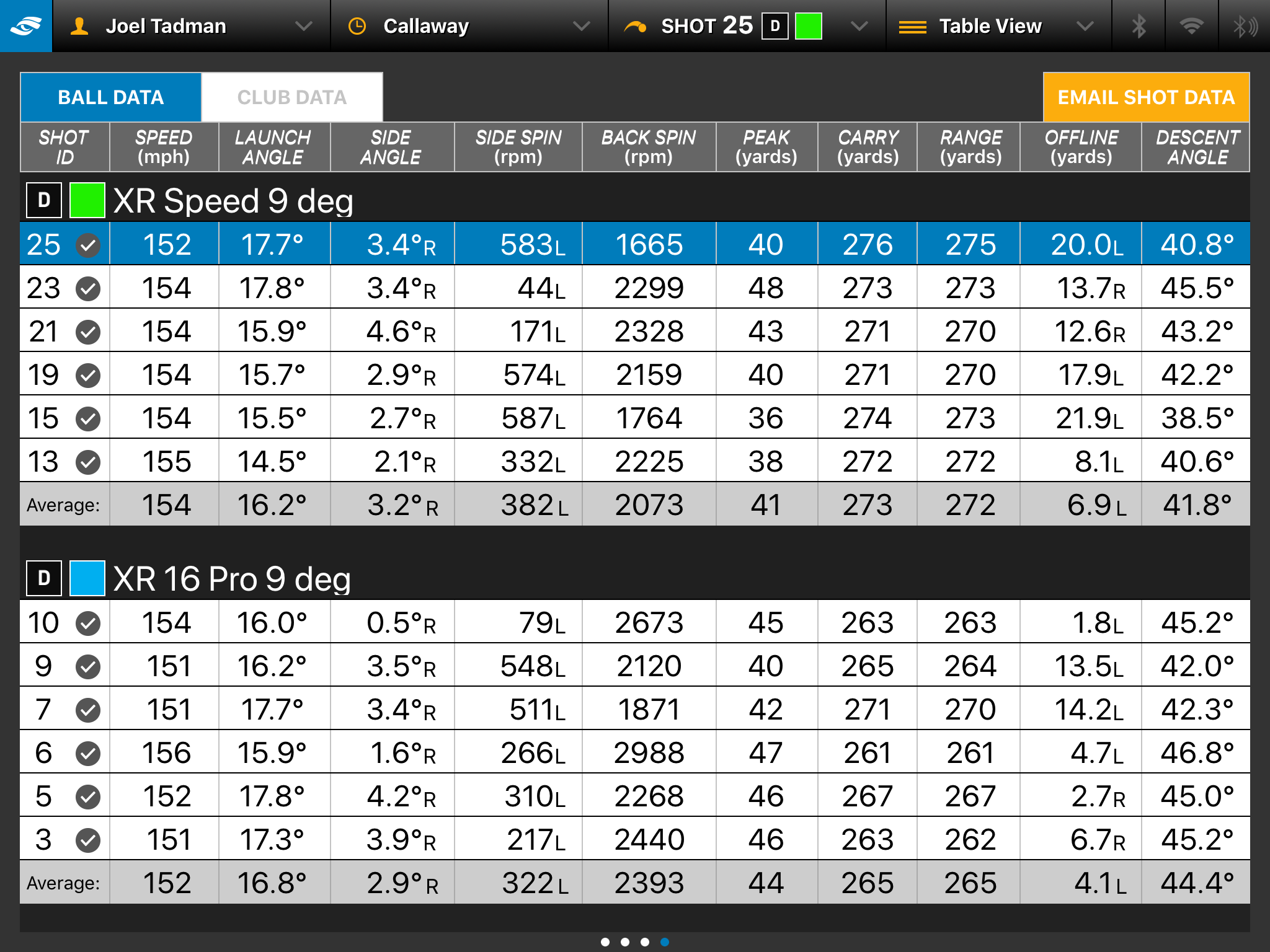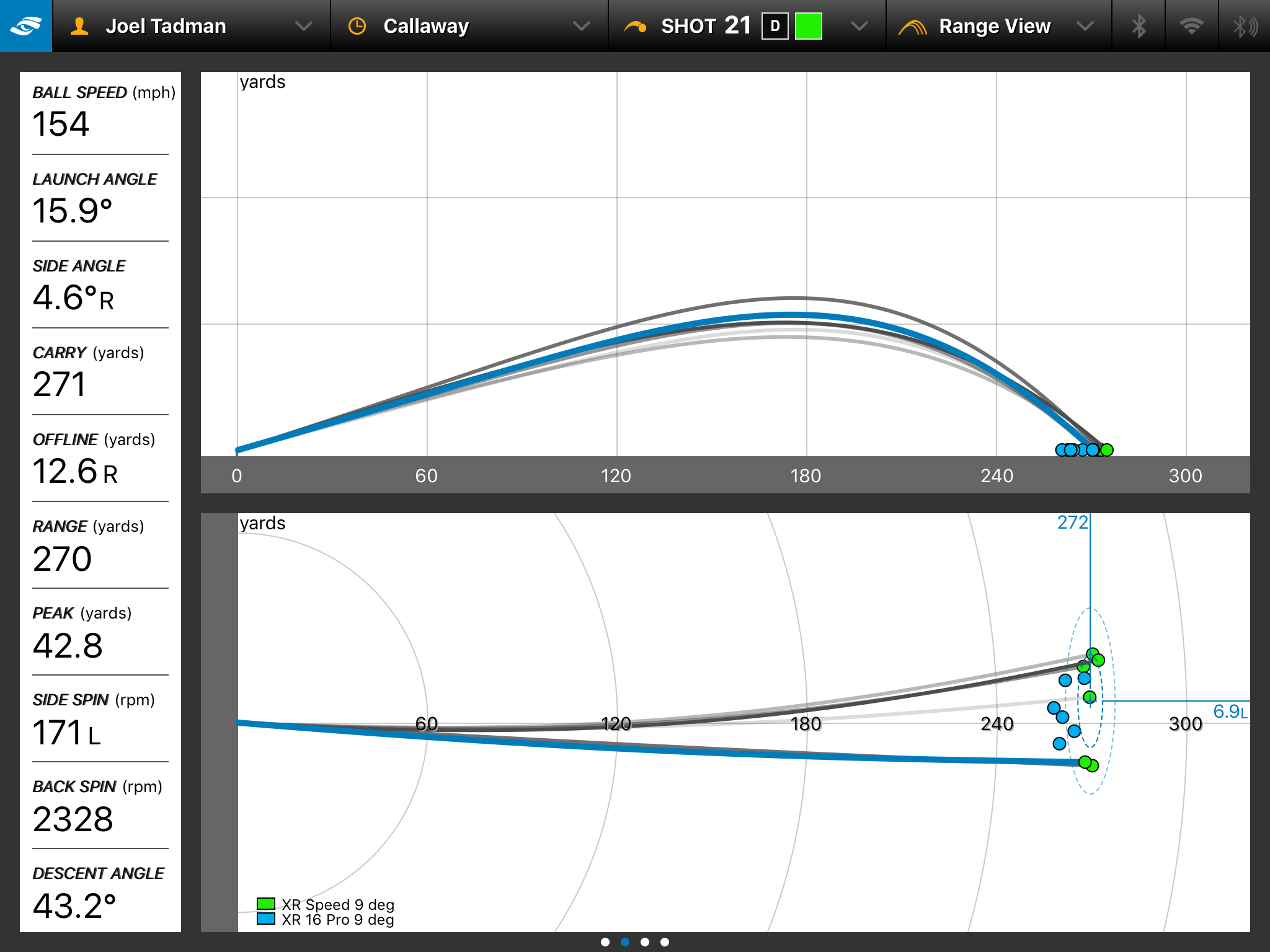Driver Test: Callaway XR Speed v XR16 Pro
We test the new Callaway XR Speed driver against its predecessor to see if there is extra performance to be had.


Driver Test: Callaway XR Speed v XR16 Pro - Joel Tadman tests the new Callaway XR Speed driver and see how it compares with the previous XR16 Pro model
Driver Test: Callaway XR Speed v XR16 Pro
Callaway claim the new XR Speed is its longest and most forgiving XR or ‘non-jailbreak’ driver to date thanks to the introduction of a host of innovations, like a new X Face VFT, carbon composite crown, a Speed Step near the face and some new shaft offerings. You can read more about all that here.
The XR Speed comes in at £339, more expensive than the £289 of the XR16 model launched two years ago but still considerably cheaper than the Rogue models up at £469.
You can see how Rogue performed here, but in this video we compared the XR16 Pro against the new XR Speed. We tested them in our Aldila Rogue shaft custom fitted for our Rogue Sub Zero driver, currently in my bag, in 9.5° and 9° respectively (a direct 9° comparison wasn’t quite possible).
We weren’t huge fans of the look, feel or sound of the XR16 driver. It has a simple, uninspiring matte-grey address look and at impact, a loud, tinny sound that lasts for longer than it should.

In contrast, XR Speed (above) has a far more cutting-edge aesthetic with the blue carbon fibre crown and red trim, Speed Step at the front and graphics underneath. It has a much more modern sensation at impact too – powerful, explosive and seemingly more stable and efficient than its predecessor.
Get the Golf Monthly Newsletter
Subscribe to the Golf Monthly newsletter to stay up to date with all the latest tour news, equipment news, reviews, head-to-heads and buyer’s guides from our team of experienced experts.
The Foresight Sports GCQuad launch monitor data generally backed up our preferred looking driver with better performance too during indoor testing.
You can see how the ball speed increased with the XR Speed, on a stronger ball flight with lower spin and longer carries by eight yards on average.

Where did the distance come from? The lower spin helped, the head certainly felt more efficient on slight mishits and perhaps most importantly, our clubhead speed increased by 1mph on average. Whether this was down to the light feel or the improved aerodynamics from the Speed Step, remains to be seen.
Interestingly, we hit the XR16 Pro a little straighter, despite its smaller size at 450cc, but we hardly sprayed the XR Speed around – most of the shots hit would still have found the fairway and the distance gains were worth a slight loosening of the dispersion, in our opinion.

This slight drop in accuracy may have been down the lightweight feel, which for most golfers will increase clubhead speed but may also affect clubface control, initially at least, before you get used to how it releases. The lower spin may have also caused the ball to curve more offline.
It’s worth noting that the XR Speed’s performance, as good as it was, didn’t quite reach the heights of my Rogue Sub Zero, which was the longest of all three by 4 yards on average carry with the lowest spin and fastest ball speeds.
The stock shaft at 45.5 inches would used to be considered long, but it’s about standard these days. In fact, some other models like the TaylorMade M4 and Ping G400 Max are longer at 45.75 inches so the XR Speed may well have struck a good balance between speed and control.
In conclusion, the XR Speed is a considerably improvement over the XR16 driver. It looks far more pleasing to the eye, feels and sound significantly better and has the added performance to back it up. It’s a very user-friendly offering that the majority of handicaps, after a shaft/loft fitting, will be able to get on with straight away.
It's not quite on the same level as Rogue - for my 109mph club speed it flew a touch high - but it certainly isn't too far behind. Arguably slower swingers will enjoy the lightweight feel more, but everyone will love the distance and forgiveness on offer from a modern-day driver coming in at under £350.
This review was filmed at Burghley Park Golf Club in Stamford, Lincs. Find them online at www.burghleyparkgolfclub.co.uk and on Facebook and Twitter.

Joel has worked in the golf industry for over 15 years covering both instruction and more recently equipment. He now oversees all equipment and video content at Golf Monthly, managing a team of talented and passionate writers and presenters in delivering the most thorough and accurate reviews, buying advice, comparisons and deals to help the reader or viewer find exactly what they are looking for.
One of his career highlights came when covering the 2012 Masters he got to play the sacred Augusta National course on the Monday after the tournament concluded, shooting a respectable 86 with just one par and four birdies. To date, his best ever round of golf is a 5-under 67 back in 2011. He currently plays his golf at Burghley Park Golf Club in Stamford, Lincs, with a handicap index of 3.1.
Joel's current What's In The Bag?
Driver: Titleist GT3, 9°, Fujikura Ventus Black 6 S shaft.
Fairway wood: Titleist TSR3, 15°
Hybrid: Titleist TSi2, 18°
Irons: Titleist T150, 4-PW
Wedges: Titleist Vokey SM10, 50°, 54° and 58°
Putter: LAB Golf DF3
Ball: 2025 Titleist Pro V1x
-
 Chevron Championship Tee Times: Rounds One And Two
Chevron Championship Tee Times: Rounds One And TwoA look at when the players are teeing it up in the opening two rounds of the Chevron Championship - the first women's Major of the year
By Mike Hall
-
 Charley Hull Social Media Video Reveals Brutal Weather Conditions Ahead Of Chevron Championship
Charley Hull Social Media Video Reveals Brutal Weather Conditions Ahead Of Chevron ChampionshipCharley Hull has added a video to her Instagram stories showing strong wind and heavy rain in Texas ahead of the first women's Major of the year
By Mike Hall